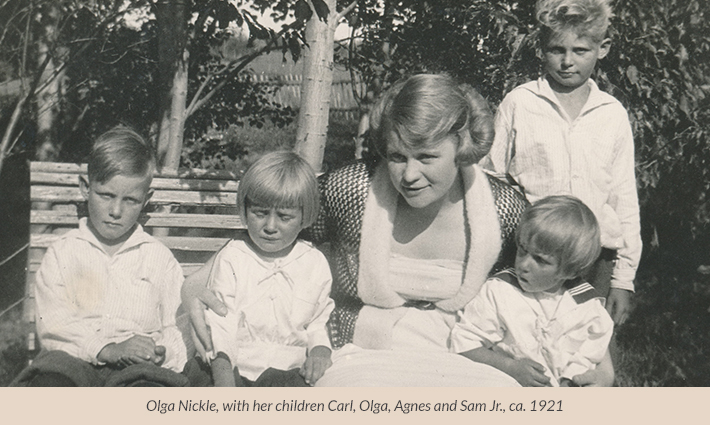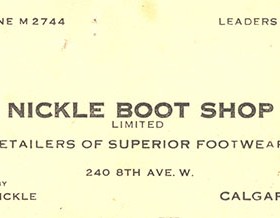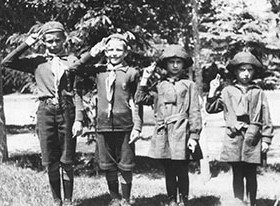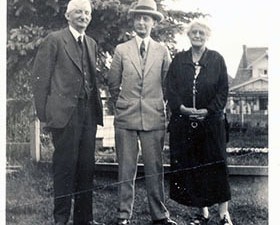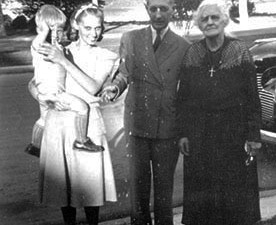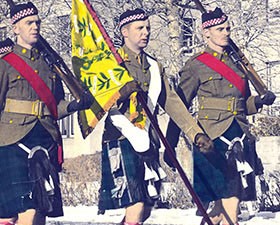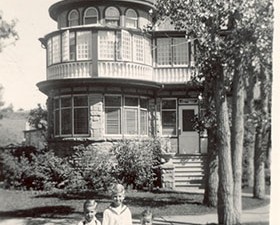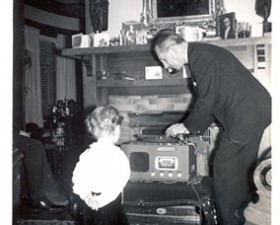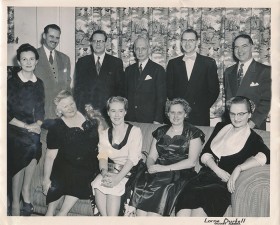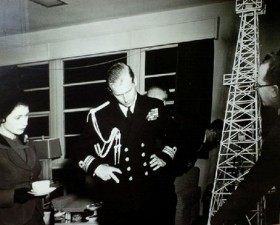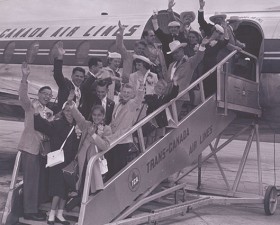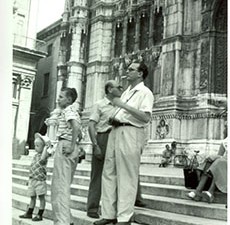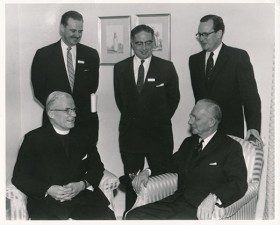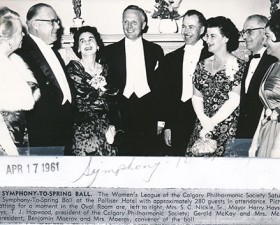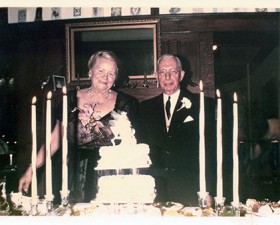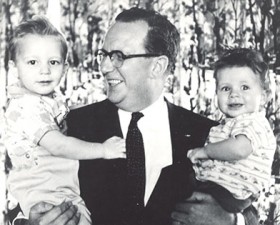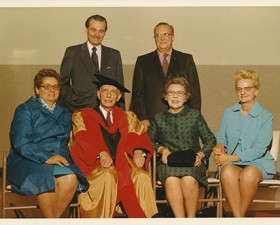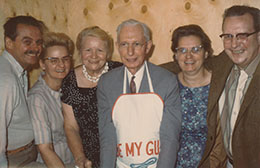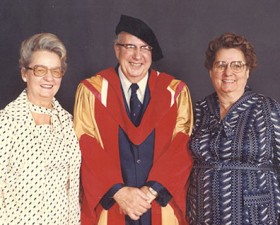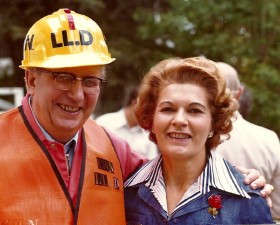History
The Nickle Family Foundation has a long history of charitable giving. We’re proud to have supported hundreds of institutions and charitable organizations over many years, and in turn strengthened the Calgary community.
The Nickle family legacy of giving lives on today in the fourth and fifth generations of family members who continue to serve on the Foundation’s board of directors. It is our goal to continue this tradition of service with future generations.
This is the story of the two men behind Nickle Family Foundation, who came from humble beginnings but chose to share their eventual success with those who needed it the most.
How it Began
It started with a man named Samuel Clarence Nickle Sr. Before his death in 1971, the Philadelphia-born oil pioneer established the SCN Foundation in Calgary as a way to give back to the community. It would later merge with his son Carl’s foundation to become Nickle Family Foundation.
Sam was well known for his thoughtful and compassionate generosity. He donated $1 million to the University of Calgary to open an art museum, the largest donation in the university’s history at the time. Sam and his wife Olga were founding contributors to the Calgary Foundation in the late 1950s. He gave countless private gifts.
Humble Origins
Although Sam gave often and generously later in his life, he came from a humble beginning. Born in 1889, Sam moved with his family to Detroit and then to Winnipeg, where he finished school. He began working as a bank and grain company clerk, and later entered the shoe business with his father. Sam married Olga, a talented violinist, in 1912 and they decided to make their life in Calgary.
After briefly serving in the U.S. Coast Guard in the First World War, Sam and the Nickle family returned to Canada and to the shoe business. The oil bug bit Sam in the 1920s.
Sam invested in oil exploration in the Turner Valley and Athabasca areas, a risky venture given the crude exploration methods of the day. It was a time of dramatic booms and busts, but Sam was hooked. When the shoe business became a casualty of the Great Depression, Sam supported his family as a distributor for Quebec-made canned pea soup and for home-study accounting and business courses.
Bitten by the Oil Bug
With Bob Brown’s major Turner Valley oil discovery in 1936, Sam decided to forsake his former business interests and devote his career to oil exploration. Using his Turner Valley leases as collateral, he formed Northend Petroleums and raised capital across the continent to drill several wells. In 1941, one of Sam’s wells was drilled to a depth of two miles, at the time the deepest oil well in the British Empire.
Raising capital for such ventures at this early stage in Alberta’s oil history was sometimes more difficult than the actual drilling. Sam literally wore holes in the soles of his shoes doing the rounds in New York and Toronto looking for backers.
A Reputation in the Oil Business
In 1944, when he had established a financial base and a good reputation in the oil business, Sam founded Anglo American Oils and ventured into oil exploration in Nova Scotia. Ahead of most of the industry, he started acquiring mineral rights in Saskatchewan and Manitoba prior to the discoveries that turned the former into an important oil province in the 1950s. In 1953, Sam risked all his resources to finance the purchase of the refinery and marketing system built by A.H. Mayland.
Like the western Canadian oil industry itself, Sam’s ventures were often precarious. He didn’t become independently wealthy until age 70. While other men were retiring, Sam continued building and finally merged his businesses into Canadian Gridoil Limited. He died at the age of 81.
A New Generation of Giving: Carl Nickle
Sam’s legacy continued with the philanthropy of his son Carl, a journalist-turned-politician who would eventually merge his own charitable venture with his father’s to create Nickle Family Foundation.
Carl, one of Sam and Olga’s four children, arrived in Calgary with his parents as a boy. His time as a Mount Royal College student coincided with the Great Depression. The family was far from wealthy and Carl didn’t have enough money to pay his tuition. The principal allowed him to remain anyway — a gesture Carl never forgot.
An Entrepreneurial Spirit
With an entrepreneurial spirit much like his father, Carl left his job as a radio reporter at CFCN to launch a newsletter: Nickle’s Daily Oil Bulletin. He had just $65 in capital. Although it floundered in its early years, the Daily Oil Bulletin would eventually become the “bible” of the oil industry.
The 1947 Leduc oil discovery blew the lid off the oil patch. Subscription orders for Carl’s newsletter poured in from governments in Canada, the U.S., and Europe, as well as investment houses, companies and banks. In 1948, Carl, with co-founder Les Rowland, launched a second publication, Oil in Canada.
Entering the Political Arena
Carl was elected to the House of Commons as a Progressive Conservative member in a 1951 by-election, and was re-elected in the 1953 general election. He retired from Parliament in 1957, in the wake of the “Great Pipeline Debate” over the routing of a trans-Canada natural gas pipeline.
In Alberta, he fought for, and eventually witnessed, the development of a pipeline network linking the province’s natural gas resources to markets in eastern Canada and the U.S. He had formed his own oil and gas company, Conventures, and served on the boards of directors of many companies in Canada and the U.S.
A lover of numismatics, Carl amassed a major collection of ancient coins. Parts of this collection were later donated to the Glenbow Museum in Calgary and the Provincial Museum in Edmonton. In 1970, the main part of the collection, worth at the time approximately $1 million, was donated to the arts museum at the University of Calgary. The gift effectively matched his father’s own donation.
Two Foundations Become One
Carl was involved in many community organizations including the Boy Scouts, the Calgary Philharmonic, the Calgary Exhibition and Stampede, and the Calgary Chamber of Commerce. In 1955, he established the Nickle Foundation, which among other things provided scholarships to students in need. Countless young Calgarians benefited from these gifts, including today’s Mayor, Naheed Nenshi.
After Sam’s death in 1971, Carl consulted with his family and decided to merge his foundation with his father’s to create Nickle Family Foundation. Carl served as president of the Foundation until 1988. Carl died in 1990 at the age of 76.
Looking Ahead
Sam and Olga Nickle had four children: Sam Jr. (1913-1994), Carl (1914-1990), Olga (1916-2005), and Agnes (1917-1998). Sam Sr. invited all four to join in the work of his Foundation. Ultimately three, Carl, Olga and Agnes, became actively involved, with Olga serving on the Board for 28 years until her retirement in 2000. Carl’s wife, Diana, served as President of our Foundation from 1988 until her passing in 2004.
Sam & Olga’s grandchildren, representing the family’s third generation, guided our Foundation for many years. And in their turn, the fourth generation now has a majority of the seats on our Board of Directors. In 2011 the first member of the fifth generation joined the Board.
It is our intention to continue our work into the future, and to turn over a strong and vibrant Foundation to the fifth and subsequent generations.
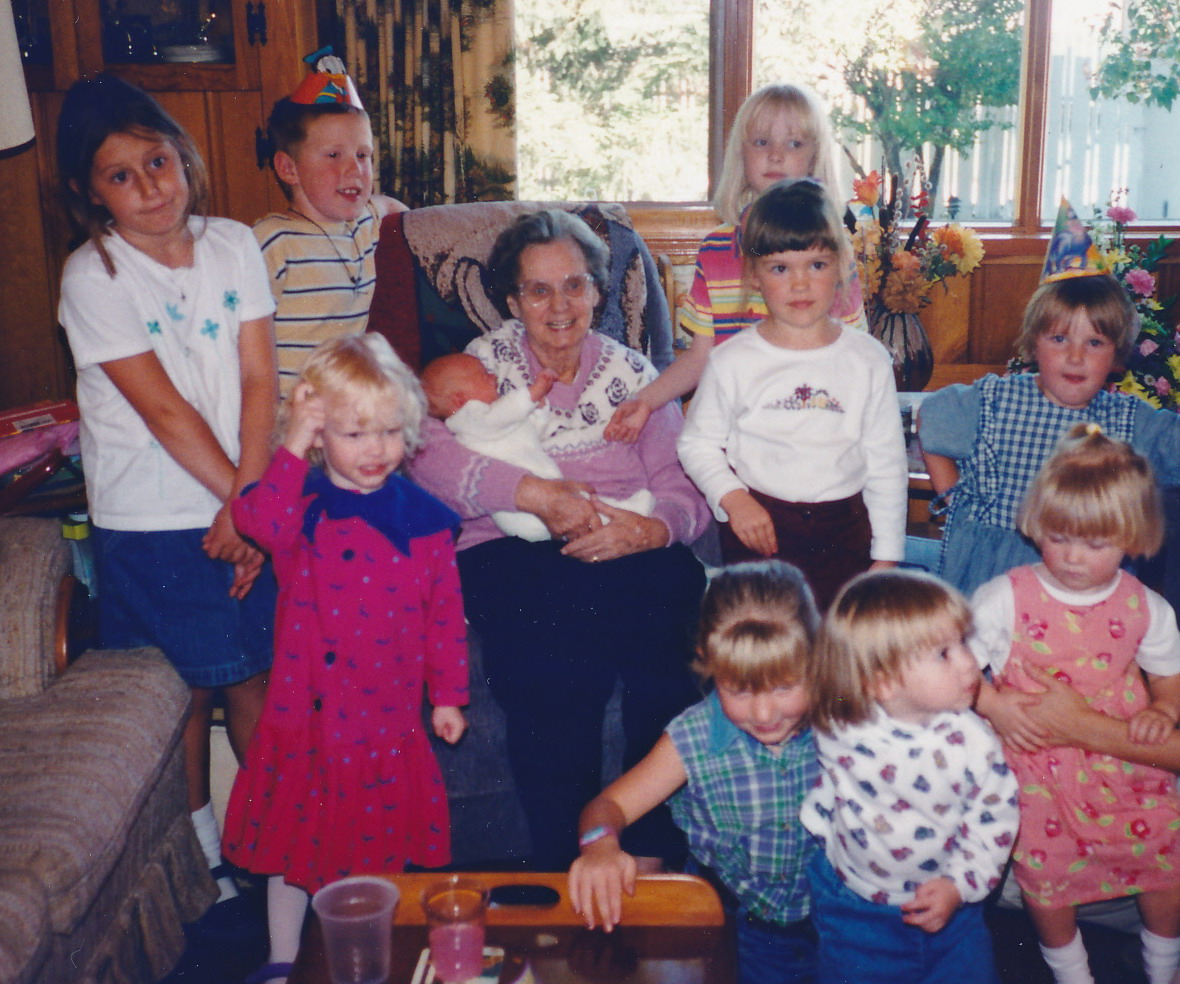 Sam & Olga’s daughter Agnes, with her great-grandchildren, on her 80th birthday in 1997
Sam & Olga’s daughter Agnes, with her great-grandchildren, on her 80th birthday in 1997
Application Deadline
- Accepting Friday, March 1, 2024
- Closing Sunday, March 31, 2024
- Decision Announced Wednesday, May 1, 2024
